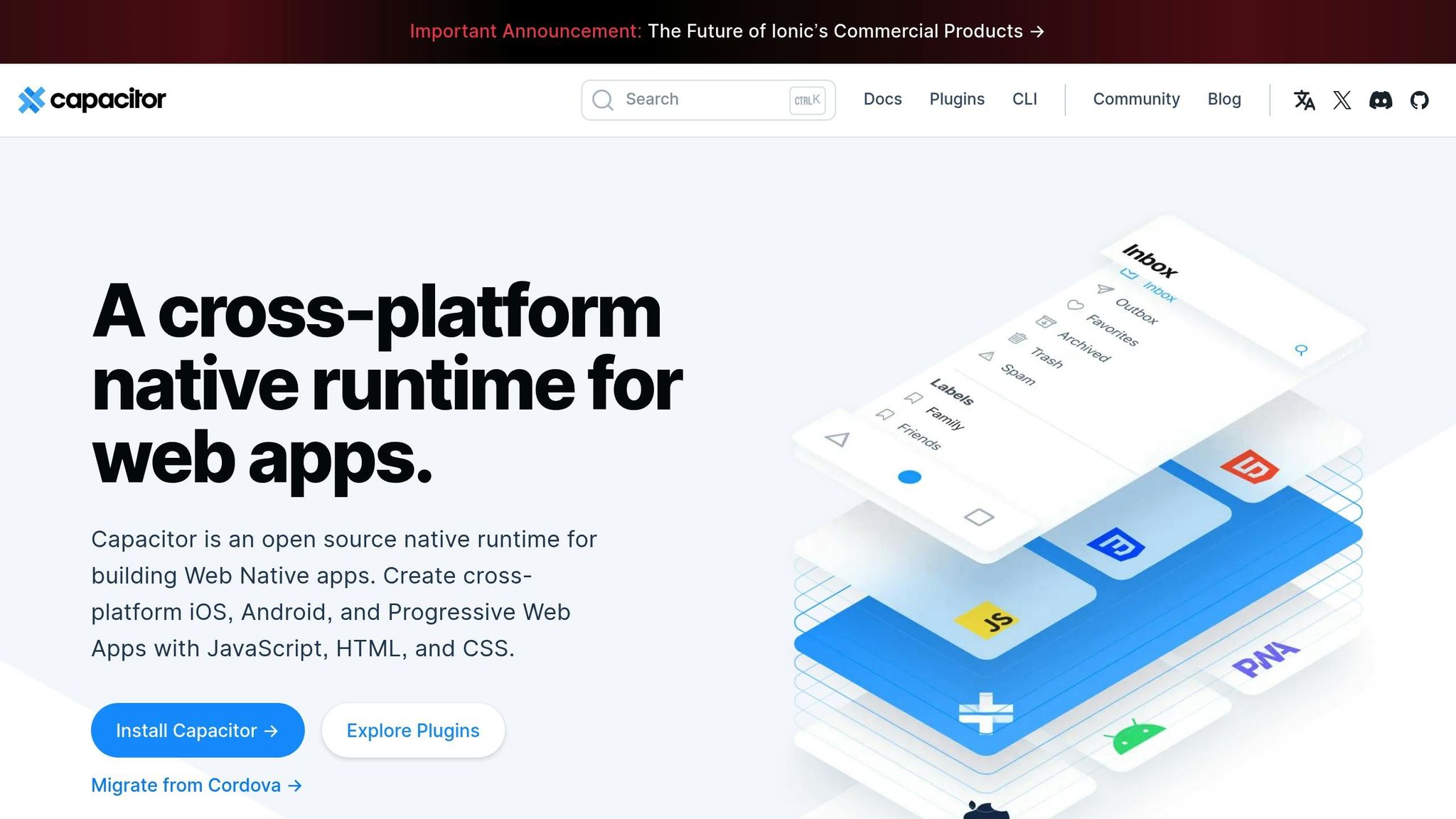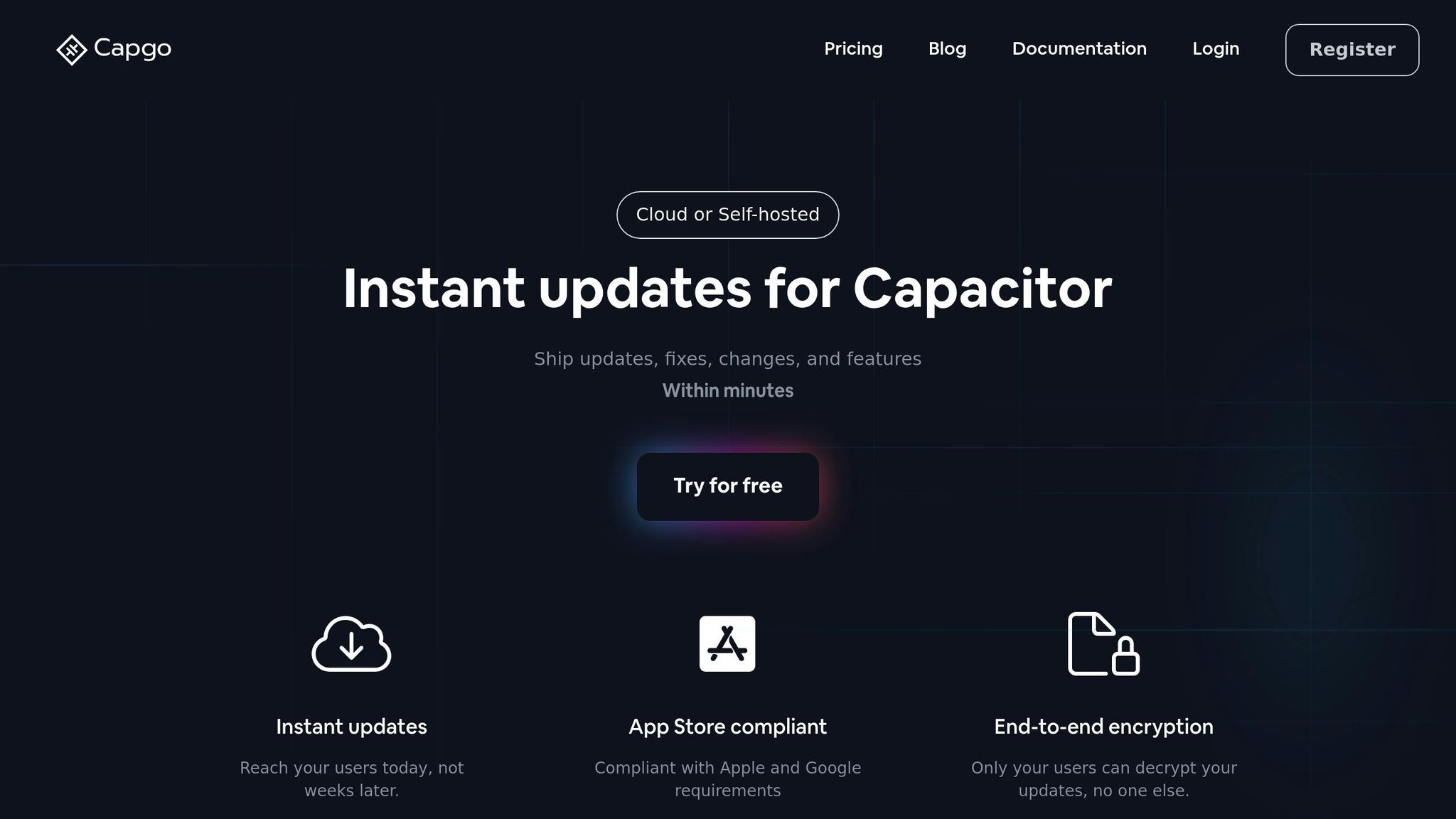Managing app versions can be tricky. Capacitor uses manual updates, while Appflow automates the process. Here’s what you need to know:
- Capacitor: Manual versioning requires editing files like
Info.plist(iOS) andbuild.gradle(Android). This gives control but risks errors and slows updates. - Appflow: Automates versioning with CI/CD tools for faster releases but costs ~$6,000/year and may lack flexibility.
Key Changes in the Market:
- Appflow shuts down in 2026.
- Alternatives like Capgo offer live updates, starting at $12/month, with 95% updates delivered in 24 hours.
Quick Comparison
| Feature | Capacitor (Manual) | Appflow (Automated) | Capgo (Alternative) |
|---|---|---|---|
| Versioning | Manual edits | Automated via CI/CD | Live updates |
| Update Speed | Slower (App Store delays) | Faster (Code-push) | Near-instant |
| Cost | Free tools | ~$6,000/year | Starting at $12/month |
| Error Risk | Higher (manual errors) | Lower | Lower |
| End Date | Active | Ends 2026 | Active |
When choosing, consider your budget, update frequency, and need for speed.
Live Demo: Building Capacitor Apps in Ionic Appflow

Versioning Methods: Capacitor vs Appflow
Capacitor and Appflow take very different approaches to managing version control. Here’s a closer look at how each platform handles this process and fits into development workflows.
Capacitor’s Manual Version Control
- For iOS, you need to manually update the Info.plist file for each release.
- For Android, version-code adjustments in the build.gradle file are done manually.
This approach gives you precise control over versioning but can slow down releases and leave room for human error.
Appflow’s Automated Version Management
- CI/CD integration takes care of version increments automatically.
- Versions are synced across iOS and Android, ensuring consistency.
While this automation speeds up the release process, it may reduce flexibility and come with higher expenses. Some developers have also reported issues with code-push functionality and rising costs.
Up next, we’ll compare the key version-control features of these platforms side by side.
Version Control Features Head-to-Head
Here’s a comparison of the key features from each platform, focusing on how they handle version control.
Core differences include:
- Version control: One relies on manual configuration files, while the other uses automated CI/CD processes.
- Update distribution: Traditional app-store submissions versus live code-push updates.
- Cost: One offers free tools, while the other can cost around $5,000 per year.
- Deployment speed: App-store reviews can take multiple days, while live code-push allows for near-instant deployment.
These differences impact how quickly updates can be released, the level of risk involved, and overall expenses.
With Microsoft’s Code Push shutting down in 2024 and Appflow expected to follow in 2026, many teams are already seeking alternatives [1].
Release Management Effects
When comparing manual and automated version control, each approach comes with its own set of challenges and trade-offs, particularly in release management.
Risks of Manual Version Control
Capacitor’s manual process requires developers to update several configuration files for every release. This increases the chance of errors, such as mismatched versions or untracked deployments. Additionally, it can lead to delays in addressing bugs, with fixes potentially taking days or even weeks to reach users.
Key challenges include:
- Keeping version numbers consistent across multiple files
- Lack of monitoring for successful updates
- Slow rollout of bug fixes
While automation can solve some of these issues, it’s not without its drawbacks.
Drawbacks of Automated Version Control
Appflow simplifies the process by automating version updates and deployments. However, this convenience comes at a steep price. With an annual subscription cost of approximately $5,000, it can significantly strain a development team’s budget, prompting some to explore more cost-effective options [1].
New Version Control Options
Managing version control for Capacitor apps has always been a challenge, especially when balancing manual errors and the high costs of automation. Fortunately, the tools available for version control have grown, offering alternatives to traditional methods.
Capgo Update System

Capgo offers a solution for teams looking to streamline version control without breaking the bank. It provides live updates while staying compliant with Apple and Google store policies. Some key features include:
- End-to-end encryption to ensure secure update delivery
- Real-time analytics, boasting an 82% success rate globally
- Partial updates to keep bundle sizes small and efficient
- Seamless integration with CI/CD platforms like GitHub Actions and GitLab CI
Current Market Status
The version control market is shifting as older services phase out. Teams now need to focus on cost, speed, and compliance when choosing a strategy. Here’s a snapshot of the current options:
- Capgo (launched 2022): Active, starting at $12/month, supports live updates
- Appflow: Shutting down in 2026, priced at $6,000/year [1], offers automated updates
These tools are stepping in to fill the void left by the closure of CodePush in 2024 and the upcoming end of Appflow in 2026.
Conclusion
Managing version control for Capacitor apps involves a mix of manual workflows, Appflow’s automation, and modern live-update platforms.
Key Takeaways
- Manual updates: Offer detailed control but come with the risk of human error.
- Appflow automation: Simplifies releases but comes with a price tag of $6,000 per year [1].
- Live-update platforms: Tools like Capgo make it easier to roll out fixes and new features quickly.
When deciding between manual updates, automated pipelines, or live-update platforms, teams should consider their release frequency, budget, and the need for speed and compliance. Each approach has its strengths and trade-offs.




